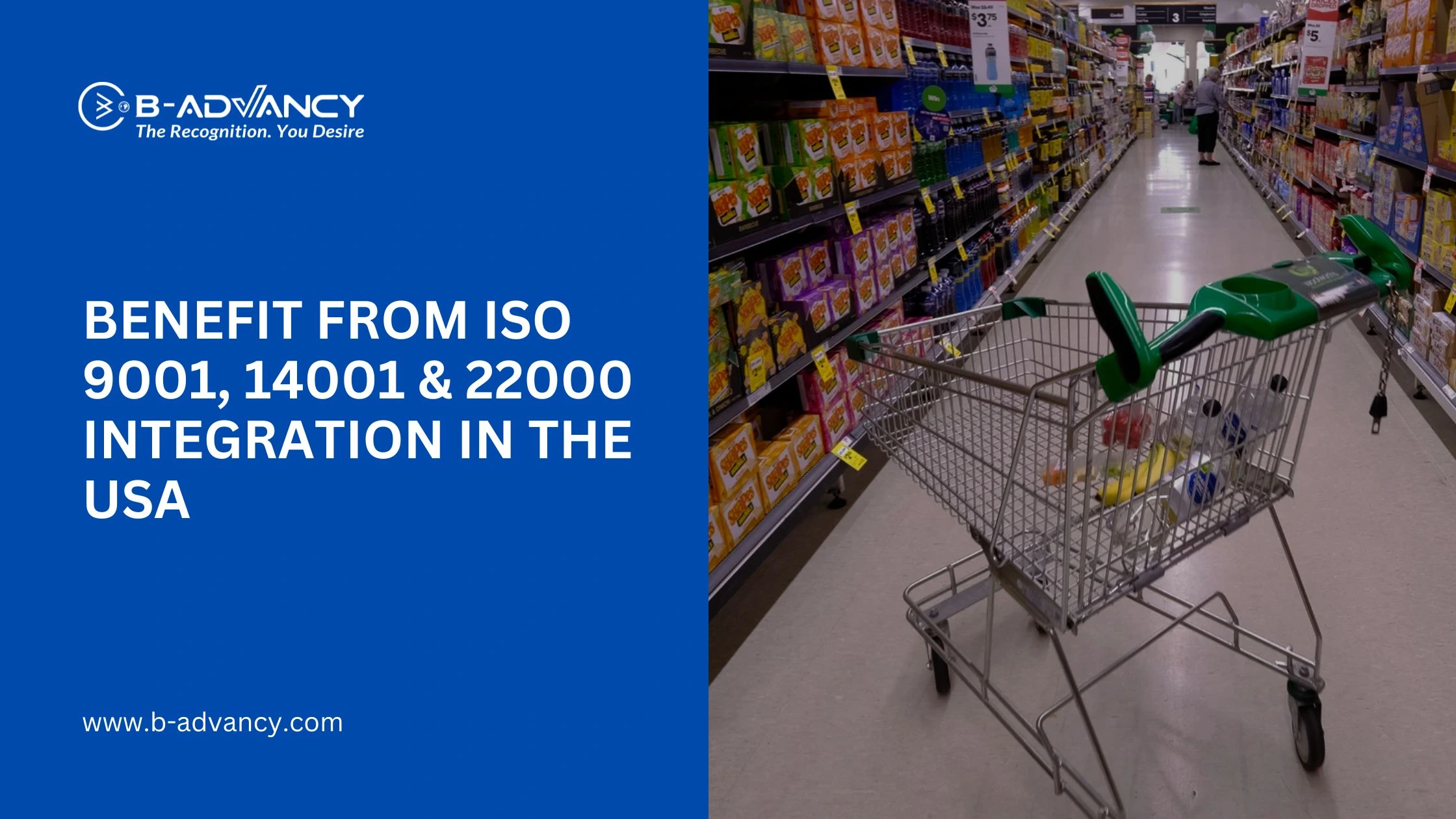
In the competitive and highly regulated U.S. retail landscape, supermarkets are under constant pressure to deliver high-quality products, minimize environmental impact, and ensure food safety at every step. Integrating ISO 9001 (Quality Management), ISO 14001 (Environmental Management), and ISO 22000 (Food Safety Management) has emerged as a strategic move for American supermarket chains looking to optimize performance, reduce risks, and build trust with consumers.
Here’s how these three ISO standards—when implemented together—provide measurable business advantages for U.S. supermarkets.
Rather than managing separate compliance frameworks, integrating ISO 9001, 14001, and 22000 allows supermarkets to build a single, cohesive management system. This unified approach reduces duplication of efforts, simplifies documentation, and enhances interdepartmental collaboration—from procurement and inventory to waste handling and quality assurance.
Result: Improved operational efficiency and cost savings across store locations.
ISO 22000 specifically addresses hazards in food supply chains, combining HACCP principles with ISO management system requirements. When combined with ISO 9001's focus on continual improvement and ISO 14001’s emphasis on sustainability, supermarkets can proactively prevent contamination, improve shelf-life management, and ensure traceability from supplier to shelf.
Result: Stronger brand reputation and increased customer loyalty due to trust in food safety practices.
With ISO 14001, supermarkets commit to reducing their environmental impact—by lowering energy consumption, managing refrigeration emissions, reducing plastic use, and improving waste recycling. As U.S. consumers and stakeholders push for more sustainable retail practices, this standard becomes a crucial differentiator.
Result: Alignment with ESG goals and better positioning with eco-conscious customers and investors.
U.S. supermarkets operate under rigorous federal and state-level regulations, from FDA food safety rules to EPA environmental guidelines. Integrating these ISO standards supports proactive compliance, reducing the risk of violations and recalls while ensuring alignment with leading retailer and supplier requirements (e.g., GFSI-recognized schemes).
Result: Fewer disruptions, lower legal risk, and smoother supplier audits and inspections.
ISO standards promote a culture of continuous monitoring, analysis, and improvement. Supermarkets gain structured tools to track customer complaints, food waste, utility consumption, and non-conformities. Integration means these KPIs can be viewed holistically, enabling strategic improvements storewide.
Result: Better decision-making and faster responsiveness to issues and customer feedback.
An integrated ISO system standardizes employee roles, responsibilities, and training. Store workers are educated not just in food handling, but also in quality procedures and sustainability practices—creating a well-rounded workforce that understands the bigger picture.
Result: Reduced human error and enhanced service quality throughout the supply chain.
Consider a mid-sized U.S. supermarket chain with over 100 locations across multiple states. After integrating ISO 9001, 14001, and 22000, they reduced food spoilage by 15%, cut electricity costs by 12%, and improved customer satisfaction scores. Moreover, their waste-to-landfill ratio decreased significantly, helping them achieve corporate sustainability goals and gain positive media coverage.
In 2025, the U.S. food retail sector is evolving rapidly—shaped by stricter regulations, growing customer expectations, and increased scrutiny over sustainability and safety. For supermarkets aiming to thrive, integrating ISO 9001, ISO 14001, and ISO 22000 is more than a compliance effort—it’s a long-term investment in operational excellence, environmental stewardship, and food security.
Supermarkets that embrace this integrated approach not only gain competitive advantage but also position themselves as leaders in responsible retail.
